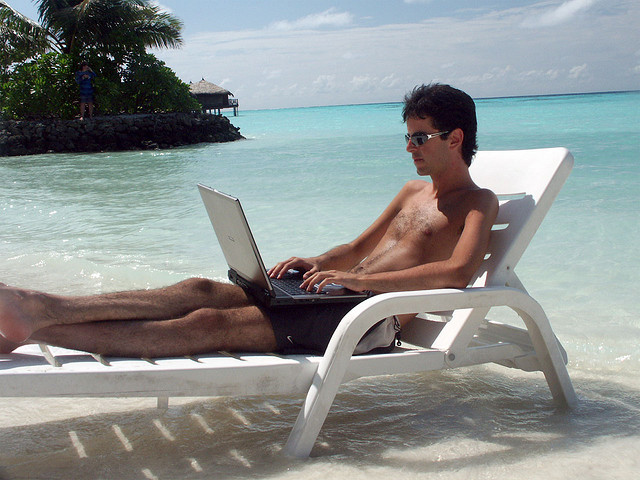Take more breaks, says productivity science
Having productivity issues at the office? It’s time you took a break. Going on vacations, taking time out for coffee, working from home, or browsing through fun stuff on the internet during work hours may make bosses frown, but taking frequent breaks is a guaranteed way to increase productivity, improve focus, and boost creativity, according to a new study.
Beginning a new chapter in the field of productivity science, a social networking company, the Draugiem Group, analyzed data from an experiment conducted with time-tracking productivity app—DeskTime. They found that the 10 percent employees with the highest productivity surprisingly put in fewer hours than their co-workers. In fact, they did not even work for the full eight hours per day. What drove these people to deliver high performance were frequent breaks, precisely 17 minutes for every 52 minutes of work.

Surfing the internet during your beach vacation is okay, as long as it’s not work-related. From Giorgio Montersino.
The break time was spent in non-work related activities like taking a walk, exercising, talking to co-workers, or a quick check on social media accounts.
Productivity expert Cathy Sexton says that the results of this study aren’t surprising. “The best way to refresh your focus is to step away and take a break,” she says. The logical reasoning behind this is that the brain is just a muscle that tires from repeated stress and needs rejuvenation. And though employees putting in more hours at work are labeled “industrious,” a smart, productive worker is the one who shows more output in fewer working hours.
According to The Muse, the top 10 percent showed the incredible ability to complete their work during such short periods because they made the most of their 52 minutes by working with “intense purpose.” Also called the “100 percent dedication theory,” working with purpose means that the 52 minutes you work, are dedicated to accomplishing your tasks.
Another study of the lunch break patterns of office workers conducted by the University of Toronto earlier this year concluded that having no lunch break actually led to lower productivity. The brain has a limited pool of psychological energy, according to John Trougakos, associate professor of Organizational Behavior & HR Management and co-author of the study. “All efforts to control behavior, to perform and to focus draw on that pool of psychological energy. Once that energy source is depleted, we become less effective at everything that we do,” he says.
An average American works 9.2 hours per day, often without a break. Around a third of workers do not take any breaks at all. Making breaks compulsory in office can be a great way to achieve what employers want—efficient and productive employees. If the 17-minute break formula seems too much, you can always opt for “micro-breaks” that last between 30 seconds to 5 minutes but help your brain kick-start all the same.
Category: New Products, Office courtesy


